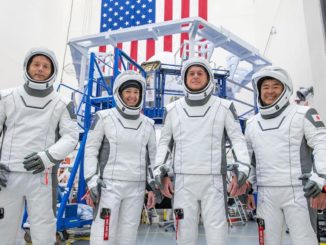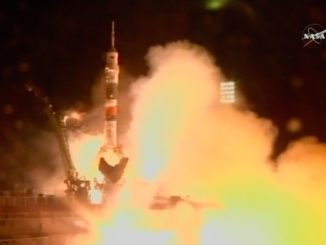The second of three robotic resupply ships going to the International Space Station in two weeks has arrived at its launch pad in Kazakhstan for liftoff Thursday aboard a Soyuz rocket.
The Progress MS-02 cargo carrier and its Soyuz booster rolled out of an assembly hangar at the Baikonur Cosmodrome in Kazakhstan at dawn Tuesday, riding a specialized rail car across the spaceport’s barren steppe before arriving at its launch pad.
Ground crews hoisted the rocket vertical atop the launch mount, and clamshell-like service towers folded around the booster to give workers access for final preflight checks.
The Progress MS-02 spacecraft is packed with more than 2.5 metric tons (5,500 pounds) of provisions for the space station’s crew, experiments, fuel, water and air.
The three-stage Soyuz rocket is set for liftoff Thursday at 1623:58 GMT (12:23:58 p.m. EDT) to begin a two-day, 34-orbit pursuit of the space station.
Fueled by a mix of kerosene and liquid oxygen, the Soyuz rocket will put the Progress MS-02 spaceship into a preliminary orbit about nine minutes after liftoff. The automated spacecraft’s own engines will shift its orbit to match that of the space station ahead of a radar-guided final approach Saturday.
Linkup with the orbiting outpost’s Zvezda service module is set for 1801 GMT (2:01 p.m. EDT) Saturday.
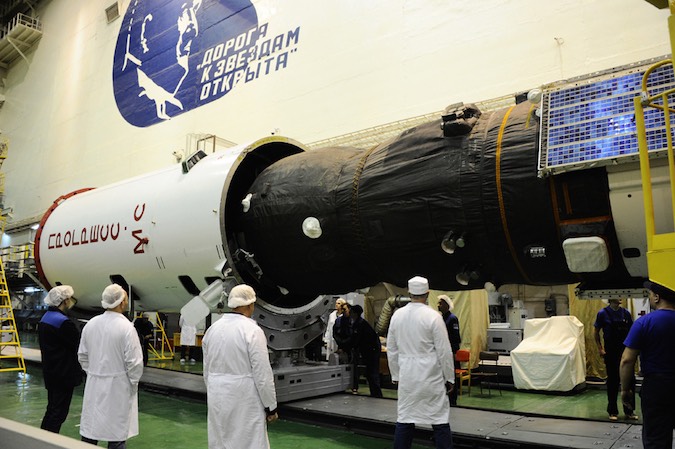
The Progress M-29M cargo ship currently occupying the aft docking port of the Zvezda module will detach from the complex at 1416 GMT (10:16 a.m. EDT) Wednesday to clear room for the arrival of fresh supplies this weekend.
Launched on a Soyuz rocket Oct. 1, the Progress M-29M spacecraft is loaded with trash and other unneeded items. Russian engineers plan to conduct experiments with the cargo capsule before guiding it toward a destructive re-entry over the South Pacific Ocean on April 8.
The launch of Progress MS-02, known as Progress 63P in the space station’s visiting vehicle manifest, marks the second of three resupply missions heading to the outpost in late March and early April.
Orbital ATK’s Cygnus cargo freighter blasted off from Cape Canaveral on an Atlas 5 rocket March 22 and reached the station Saturday, delivering 7,745 pounds (3,513 kilograms) of supplies and experiments to the research lab.
SpaceX, NASA’s other commercial cargo carrier, is aiming to launch its next Dragon supply run from Florida on a Falcon 9 rocket April 8 with nearly 7,300 pounds (3,310 kilograms) of cargo.
The Progress MS-02 spaceship is expected to stay attached to the space station until October, when it will depart for a fiery finale to vaporize the outpost’s garbage in Earth’s atmosphere.
The supply ship is the second Progress craft fitted with multiple upgrades to navigation and communications systems that will debut on the Soyuz crew capsule in June.
The Progress MS generation features an upgraded command and telemetry system, new digital communications equipment to improve video links with the space station during its rendezvous with the outpost, and a backup motion control system for the Progress spacecraft’s manual control system, which cosmonauts on the station would use to take over if its autopilot failed during docking.
The Progress MS series of spacecraft also carry an improved Kurs rendezvous radar, which feeds range closure rate data to the capsule’s computers during approach to the space station. A radio link with Russian data relay satellites in geostationary orbit is also installed on the new generation of Progress vehicles, allowing better communications between the spacecraft and ground controllers even when it is flying outside the range of ground stations on Russian territory, according to Roscosmos.
The spaceship’s navigation system, space debris shielding and spotlight also see improvements, along with the mechanism that firmly latches the cargo capsule to the space station after docking.
More photos of the Progress MS-02 spacecraft’s launch preparations and Tuesday’s rollout are posted below.
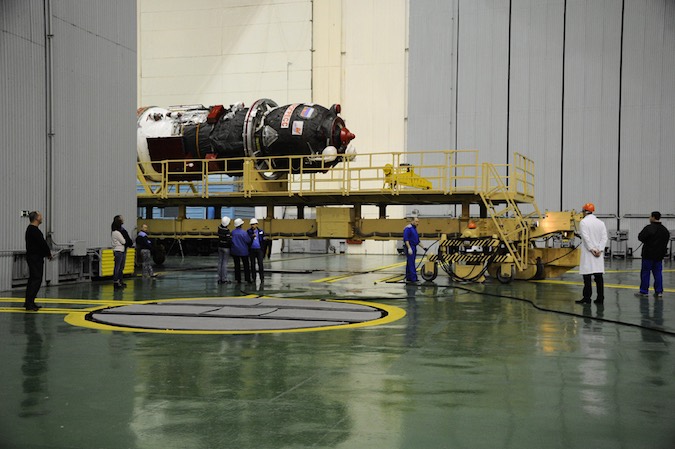
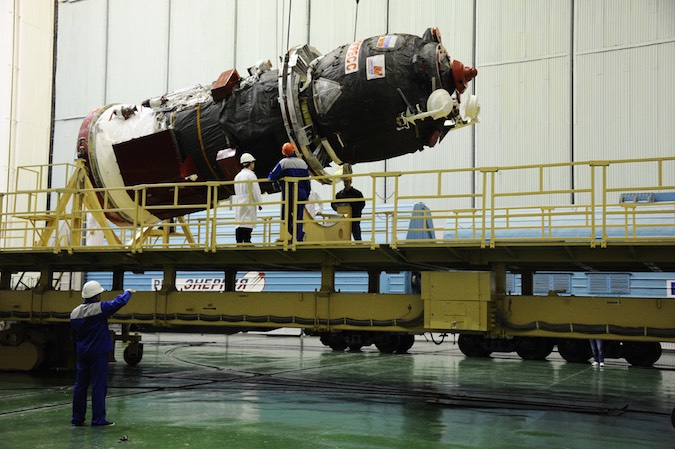

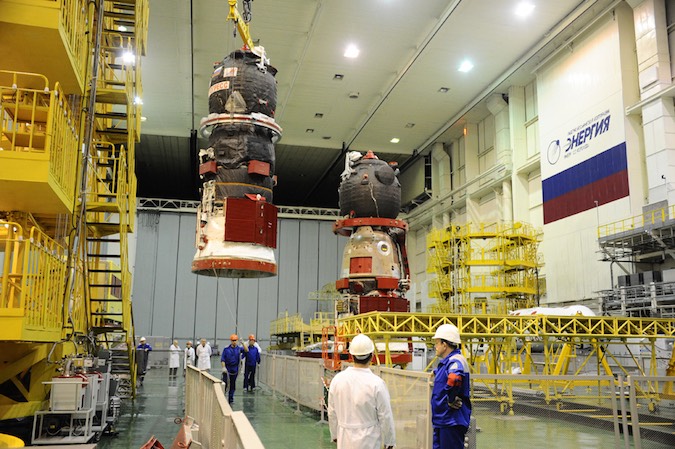
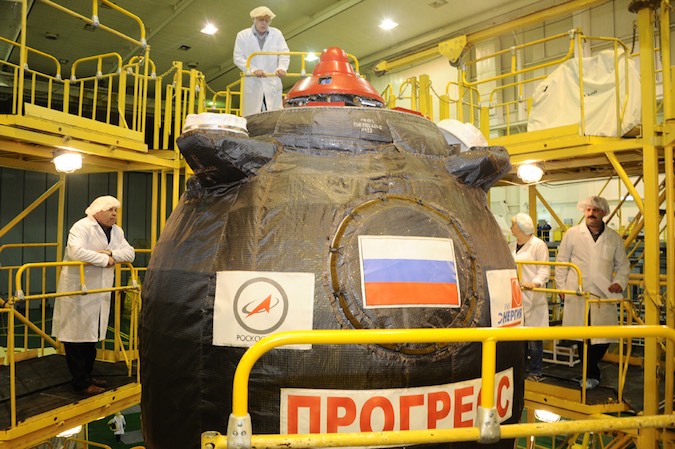

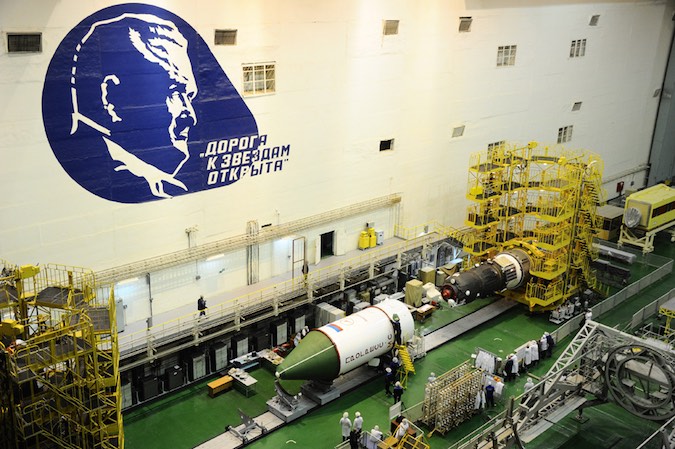
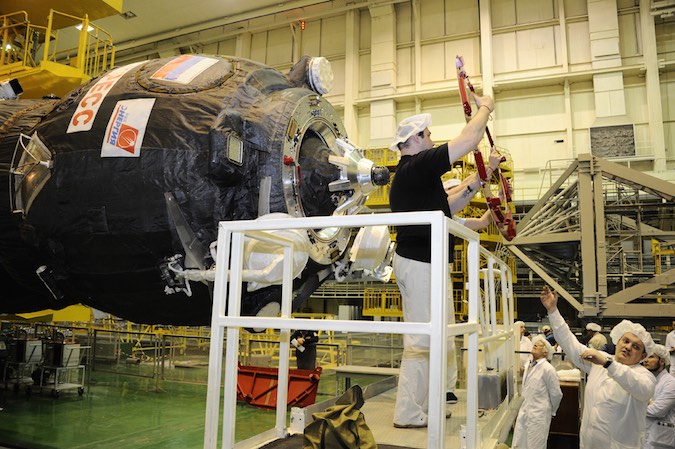
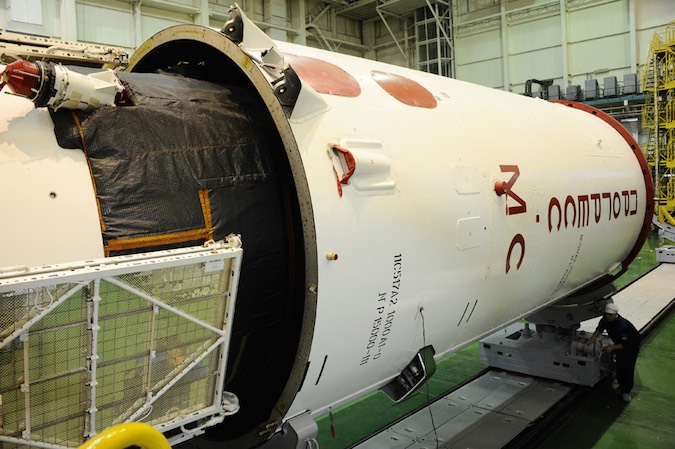

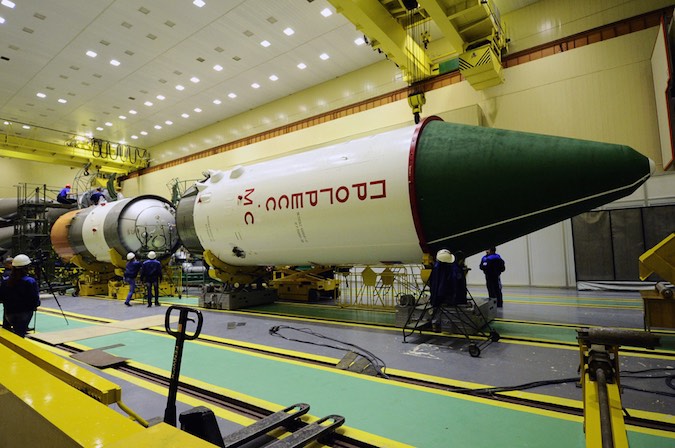
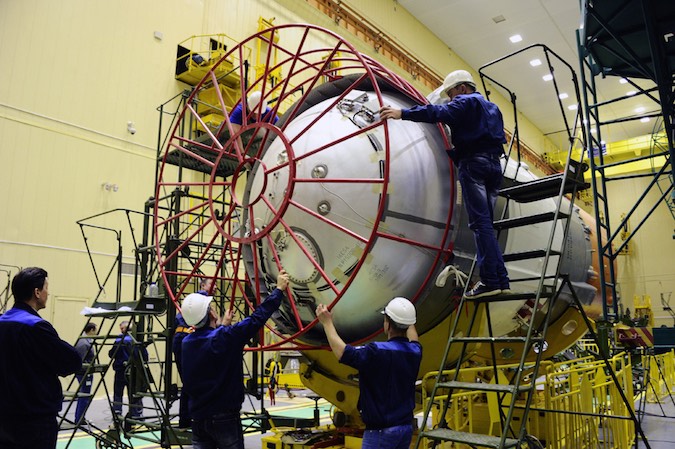
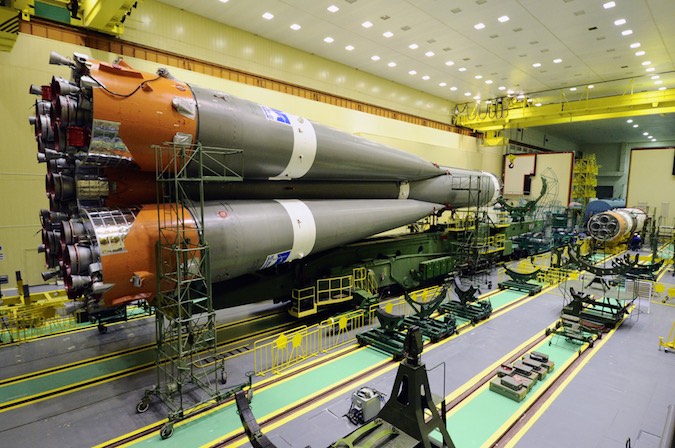
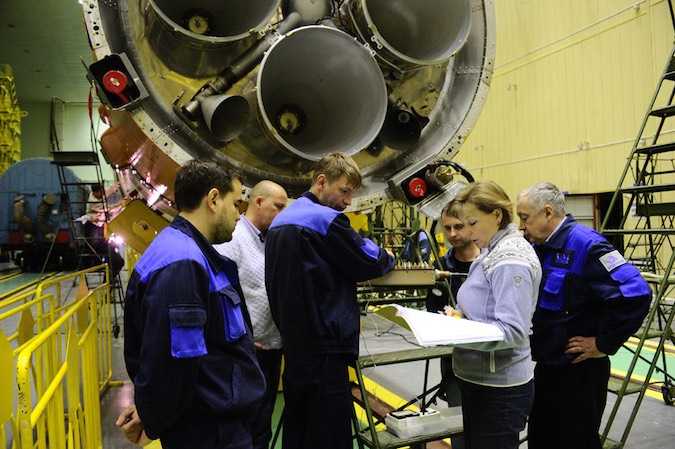

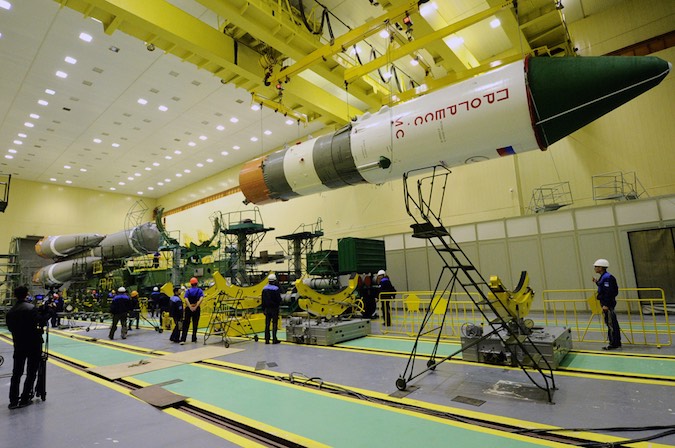

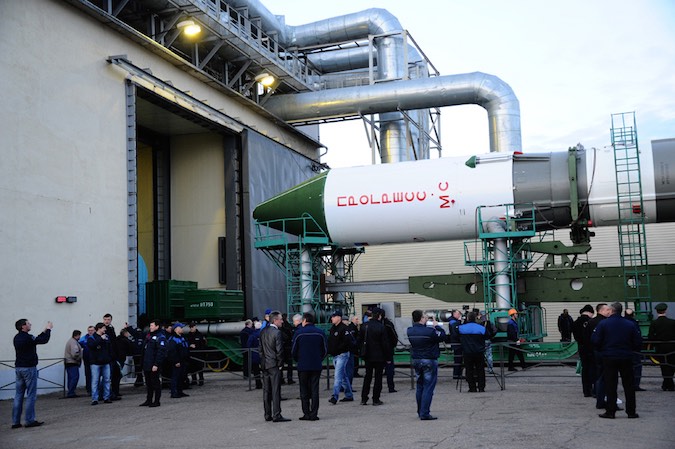
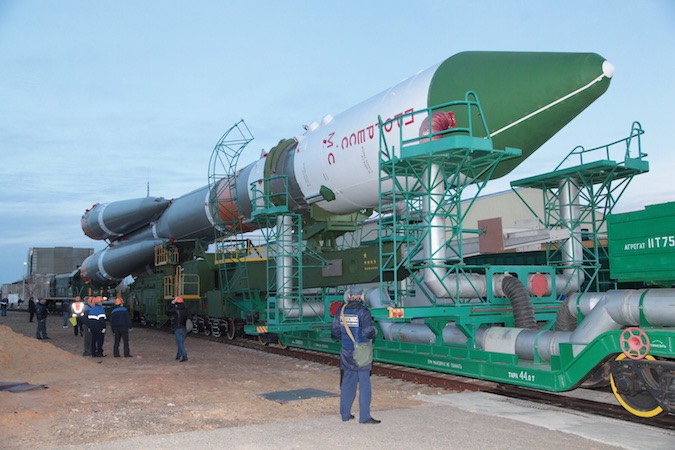
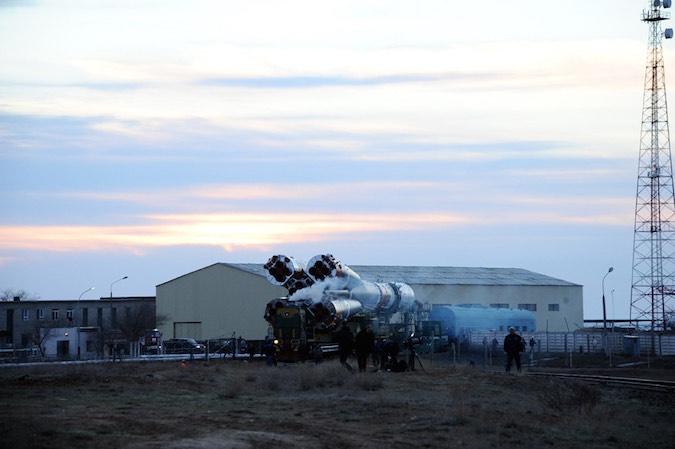
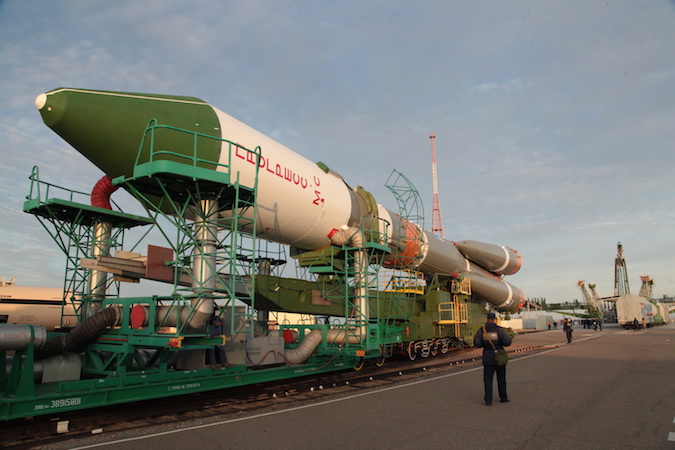
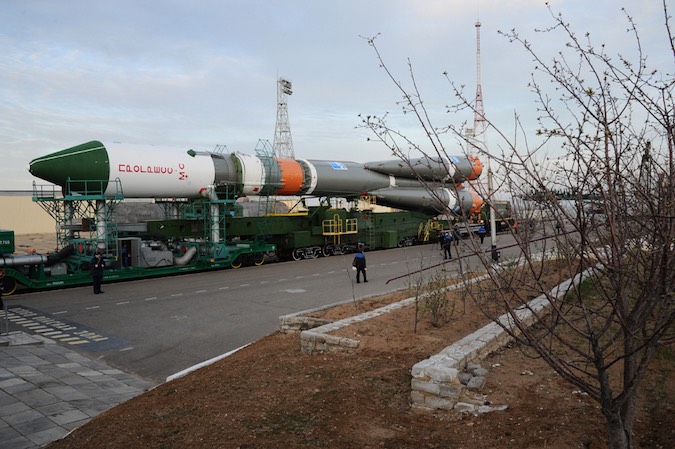
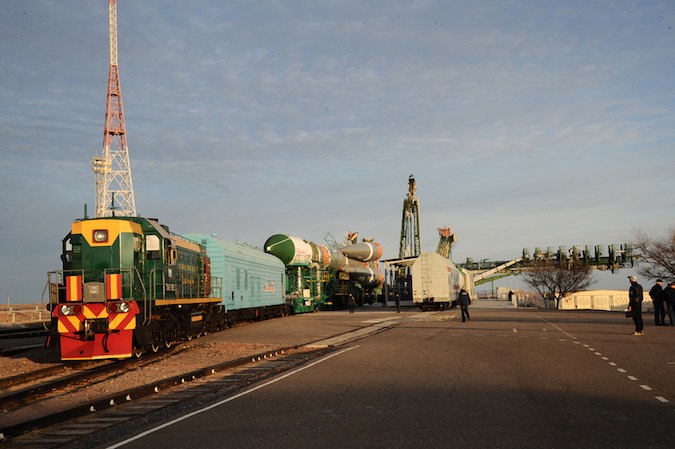
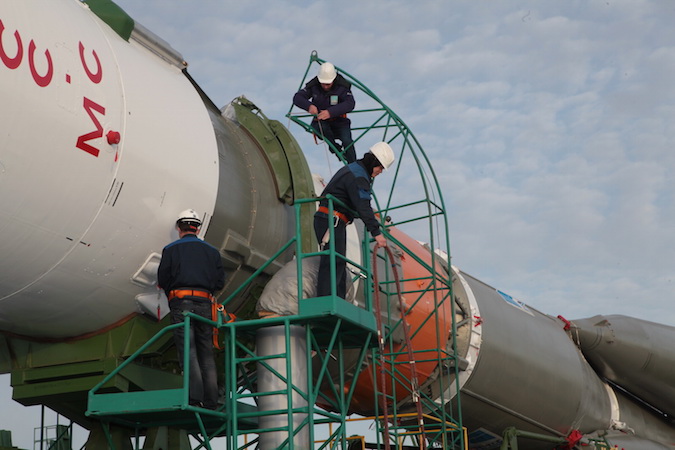


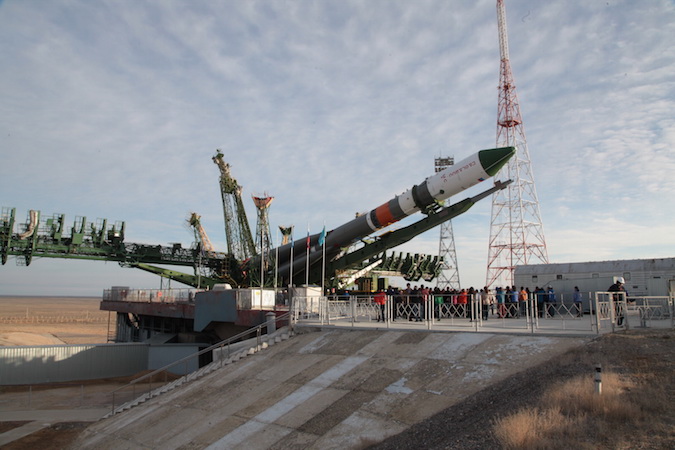
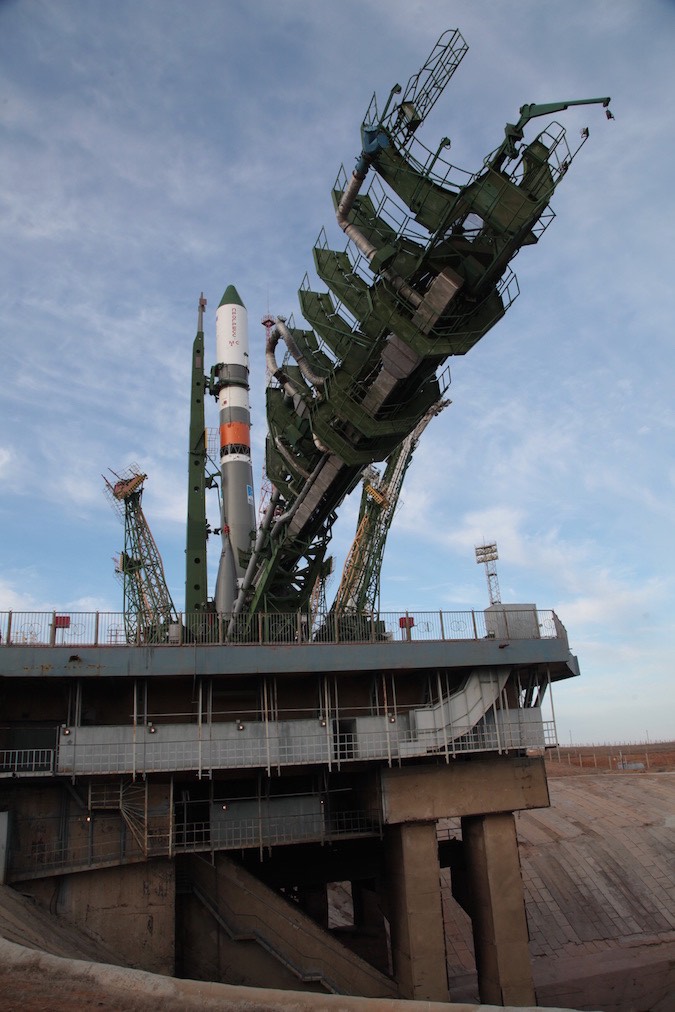
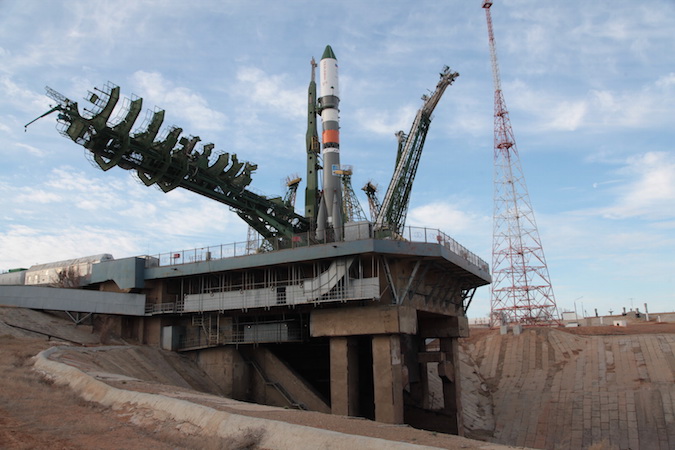


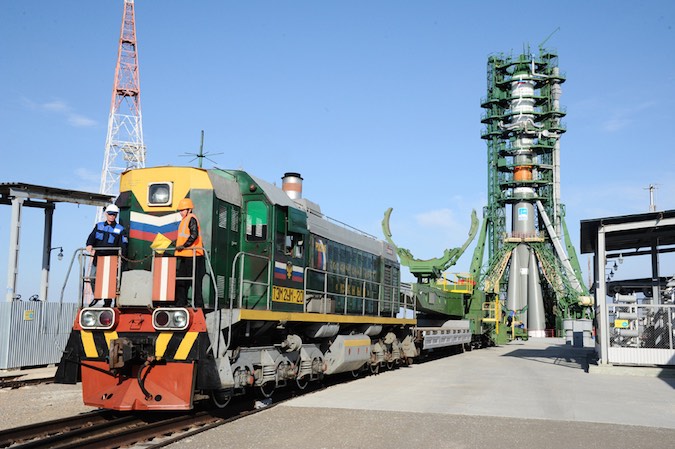
Email the author.
Follow Stephen Clark on Twitter: @StephenClark1.

